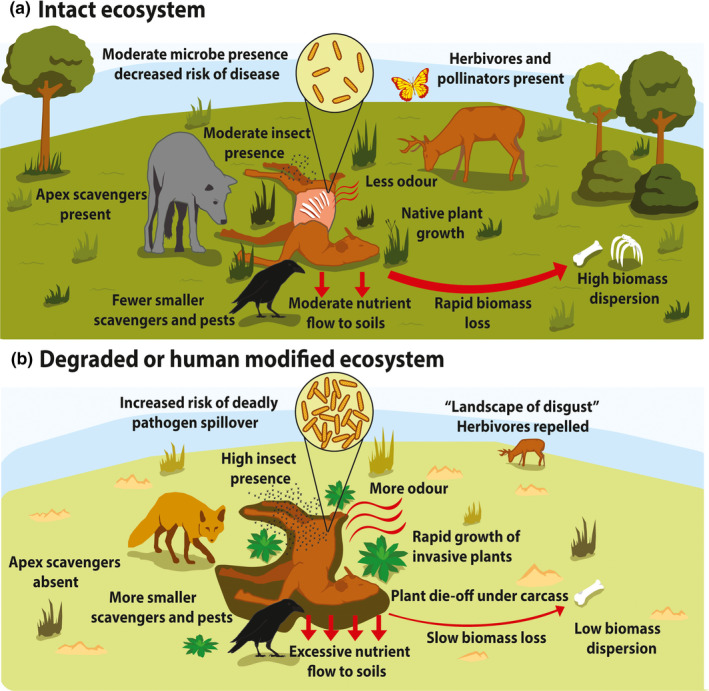FIGURE 3.

Hypothetical depiction of what could potentially happen around carrion in an (a) intact ecosystem and (b) degraded or human‐modified ecosystem. Each of the responses we note (text in figures) is relevant to our proposed scavenger and ecological indicators. The figures reflect that apex scavengers are present in an intact ecosystem, whereas mesoscavengers, insects, and introduced species dominate use of carrion in the degraded ecosystem. As a result, carrion biomass loss and dispersion should be greater in the intact ecosystem. The proportional change in soil properties (e.g., total nitrogen and carbon content) during decomposition should be lower in the intact ecosystem. Key soil invertebrates may be absent from degraded ecosystems and thus be absent under carrion. Plant die‐off and invasive plants are likely to be more prevalent under and around a carcass following excessive carcass nutrient flow to soils in the degraded ecosystem. Plant die‐off and the lack of native vegetation could impact native herbivores. However, the greatest impacts to herbivore species will likely come as a result of increased odor resulting from a lack of any functional scavenger guild in degraded ecosystems. Deadly pathogens may become prevalent in degraded ecosystems, leading to increased spillover risks around carrion. This may create a “landscape of disgust” and will also repel herbivores from the local area (see Weinstein et al., 2018)
